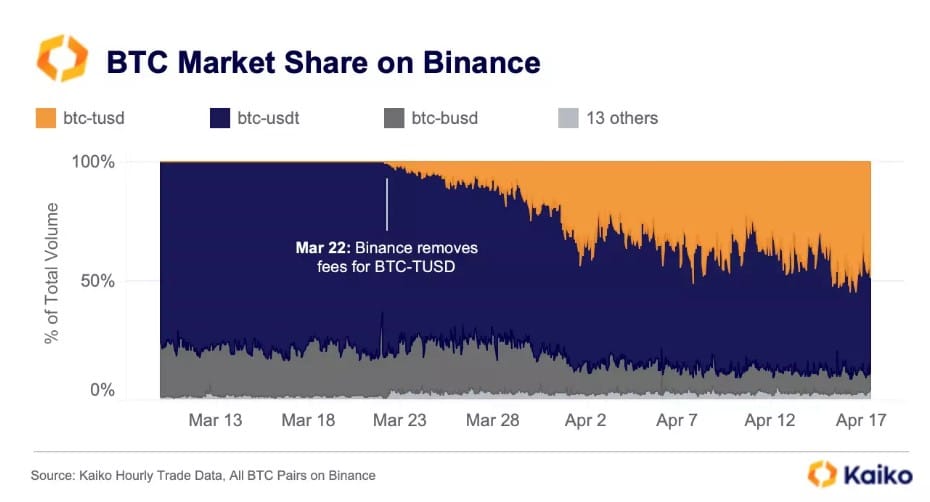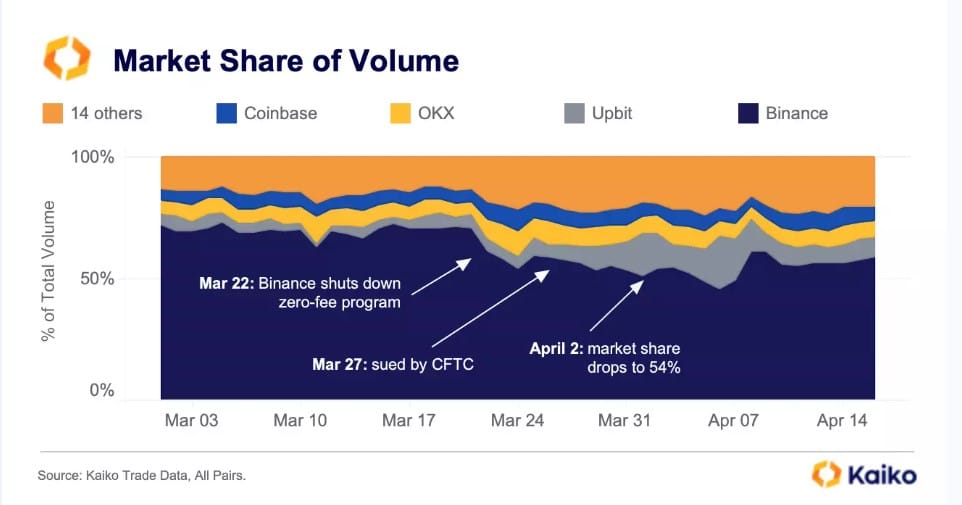Important facts:
-
Kaiko estimated that if anyone doubted Binance’s impact on the market, that is no longer the case.
-
Bitcoin’s daily trading volume has been falling since late March, when Binance reactivated fees.
A recent move by Binance, the cryptocurrency exchange with the highest global trading volume, showed how it is impacting the market, and this time negatively. At least, that’s what the latest report from Kaiko, the digital asset market analysis firm, published on April 20 estimated.
Kaiko’s report shows that were the first three months of 2023 the second quarter in history with the largest bitcoin trading. According to its records, only the second quarter of 2021 exceeded such a level. On both occasions, the trading volume of the cryptocurrency exceeded $1 billion (USD).
Although Kaiko accomplished this feat, she noted that you can see it by looking at the daily volume of BTC trades slowed towards the end of the first quarter and so far in april. And he noted that this came specifically after Binance reinstated fees on most pairs like Bitcoin-Tether (USDT), which “is negative for the industry in general.”
Kaiko differentiated that further Binance reported that this change did not include the bitcoin pair and little-known stablecoin TrueUSD (TUSD)., meaning that it would continue to be maintained without tariffs. With that in mind, the report estimates that trading in these assets has grown “from nothing to around $60 million an hour,” monopolizing the market share of other stablecoins, CriptoNoticias reported days ago.
To understand how drastic the implications of this decision are, Kaiko warned against it BTC-TUSD became the most traded cryptocurrency pair on Binance. He noted that BTC-TUSD now controls 50% of all Bitcoin volume on the exchange, up from virtually 0% just a month before the announcement.

All of this, alongside other steps taken in the past, shows that “Binance has a lot of power in the market,” Kaiko pointed out. He commented that if anyone doubts the impact this exchange has had on the market, not now.
Binance loses market share after fee activation
Kaiko’s report highlights as positive that there are fees on Binance in light of the reactivation Investors who have chosen other platforms. He estimates that this can be seen in his market share, which has fallen by 20% since the execution of this decision.

Kaiko concluded that Binance’s reduced dominance over other platforms “should result in a healthier market structure and less monopolistic competition.” He also emphasized that a market that relies less on USDT is also healthier.